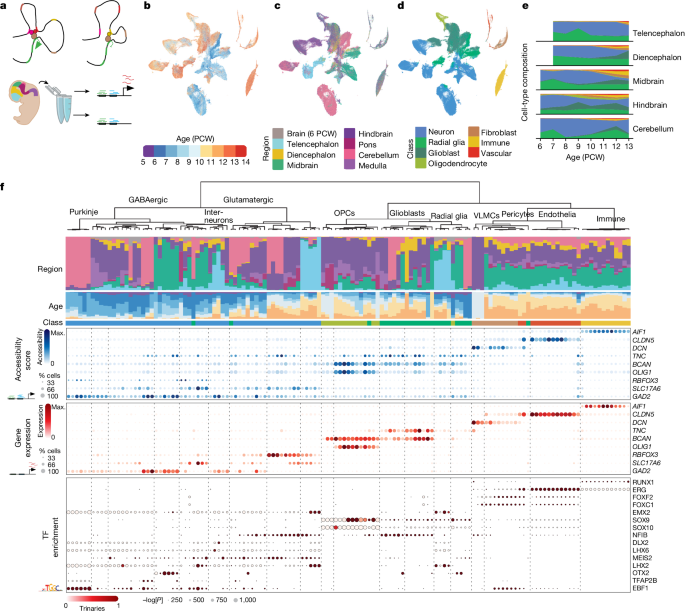2024-05-02 カロリンスカ研究所(KI)
<関連情報>
- https://news.ki.se/early-genetic-development-of-the-brain-mapped
- https://www.nature.com/articles/s41586-024-07234-1
ヒトの第一期神経発達におけるクロマチンアクセシビリティ Chromatin accessibility during human first-trimester neurodevelopment
Camiel C. A. Mannens,Lijuan Hu,Peter Lönnerberg,Marijn Schipper,Caleb C. Reagor,Xiaofei Li,Xiaoling He,Roger A. Barker,Erik Sundström,Danielle Posthuma & Sten Linnarsson
Nature Published:01 May 2024
DOI:https://doi.org/10.1038/s41586-024-07234-1

Abstract
The human brain develops through a tightly organized cascade of patterning events, induced by transcription factor expression and changes in chromatin accessibility. Although gene expression across the developing brain has been described at single-cell resolution1, similar atlases of chromatin accessibility have been primarily focused on the forebrain2,3,4. Here we describe chromatin accessibility and paired gene expression across the entire developing human brain during the first trimester (6–13 weeks after conception). We defined 135 clusters and used multiomic measurements to link candidate cis-regulatory elements to gene expression. The number of accessible regions increased both with age and along neuronal differentiation. Using a convolutional neural network, we identified putative functional transcription factor-binding sites in enhancers characterizing neuronal subtypes. We applied this model to cis-regulatory elements linked to ESRRB to elucidate its activation mechanism in the Purkinje cell lineage. Finally, by linking disease-associated single nucleotide polymorphisms to cis-regulatory elements, we validated putative pathogenic mechanisms in several diseases and identified midbrain-derived GABAergic neurons as being the most vulnerable to major depressive disorder-related mutations. Our findings provide a more detailed view of key gene regulatory mechanisms underlying the emergence of brain cell types during the first trimester and a comprehensive reference for future studies related to human neurodevelopment.


